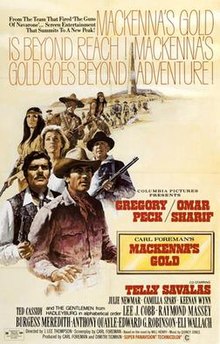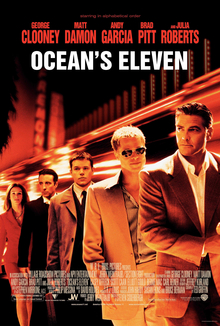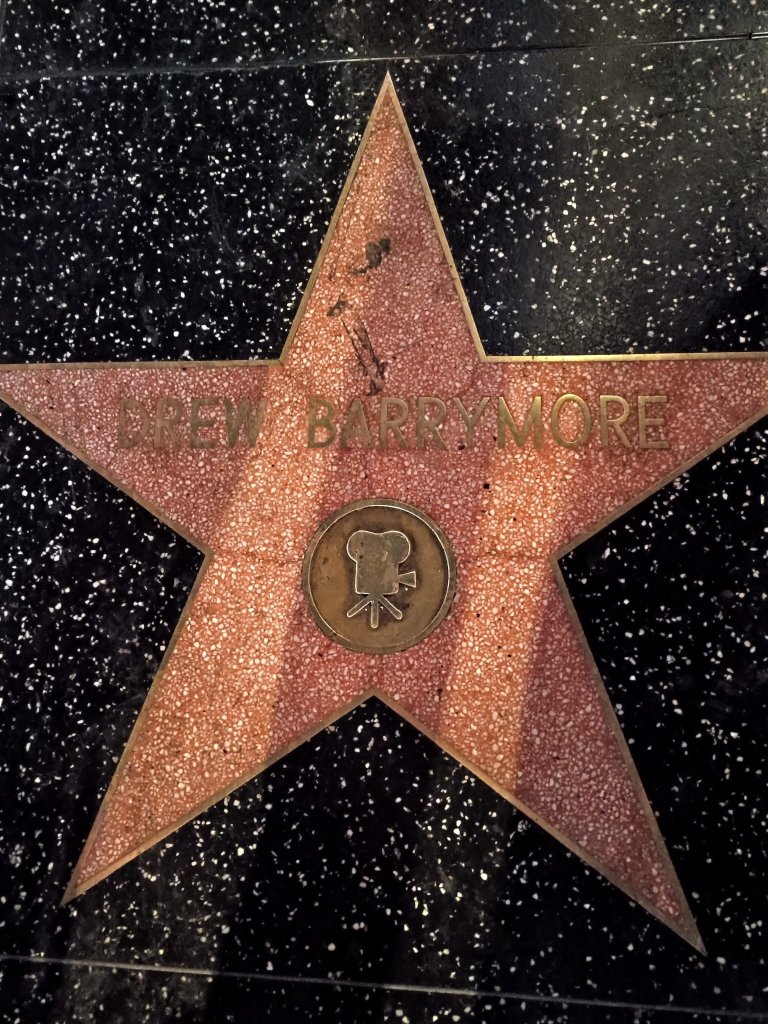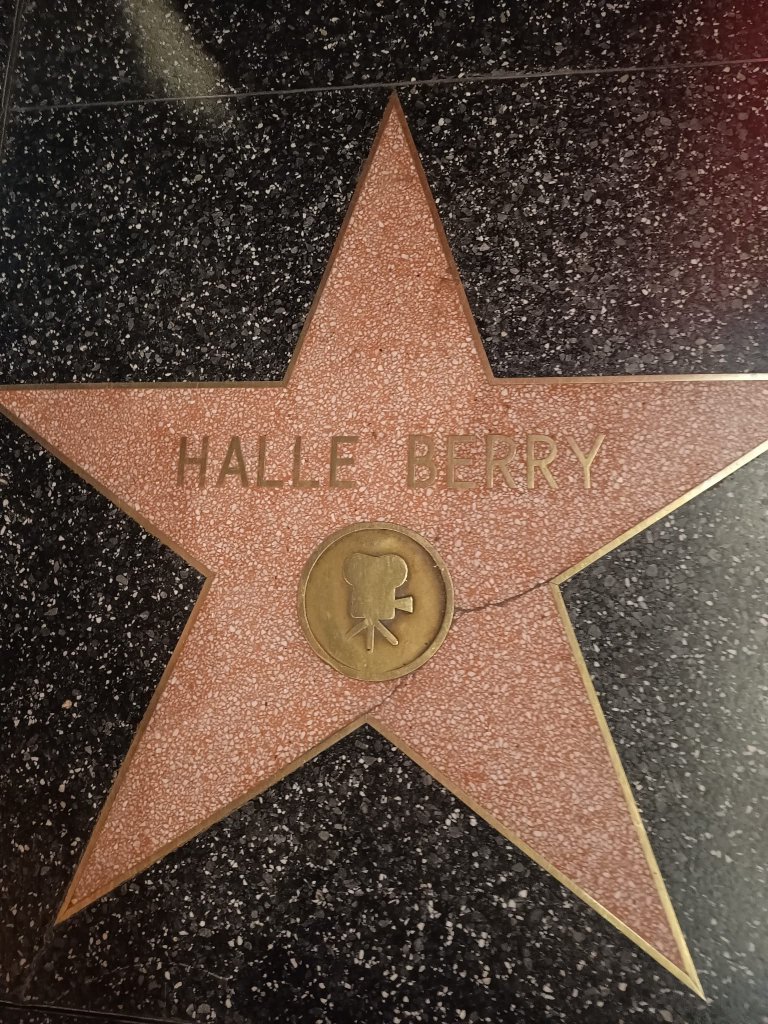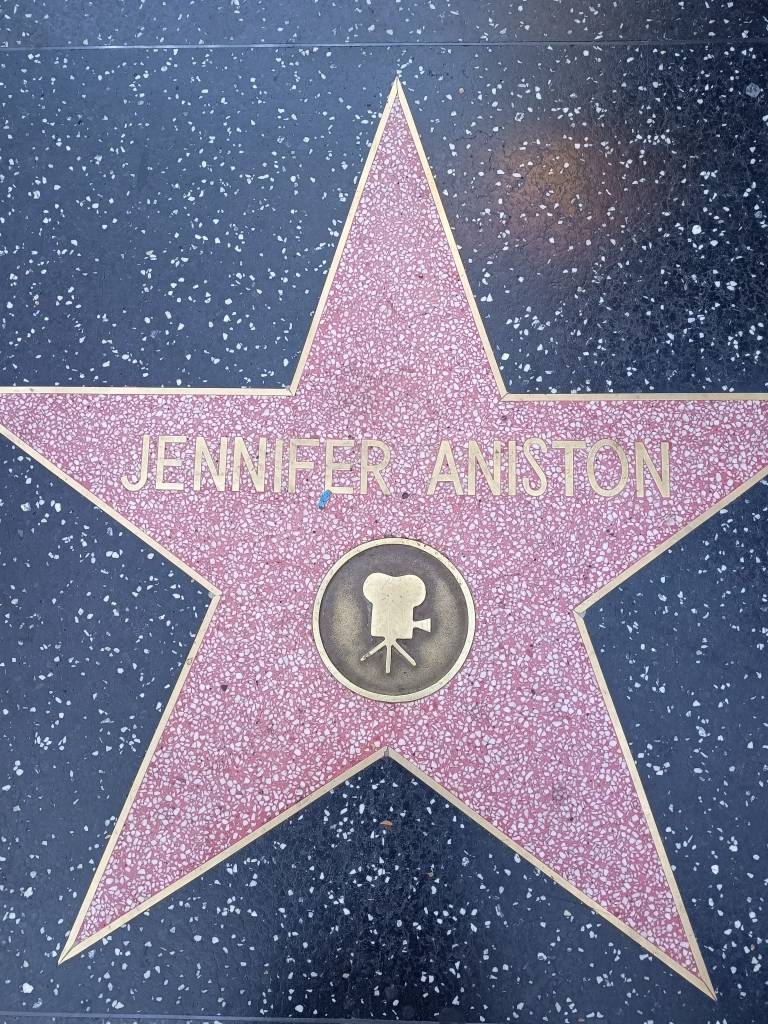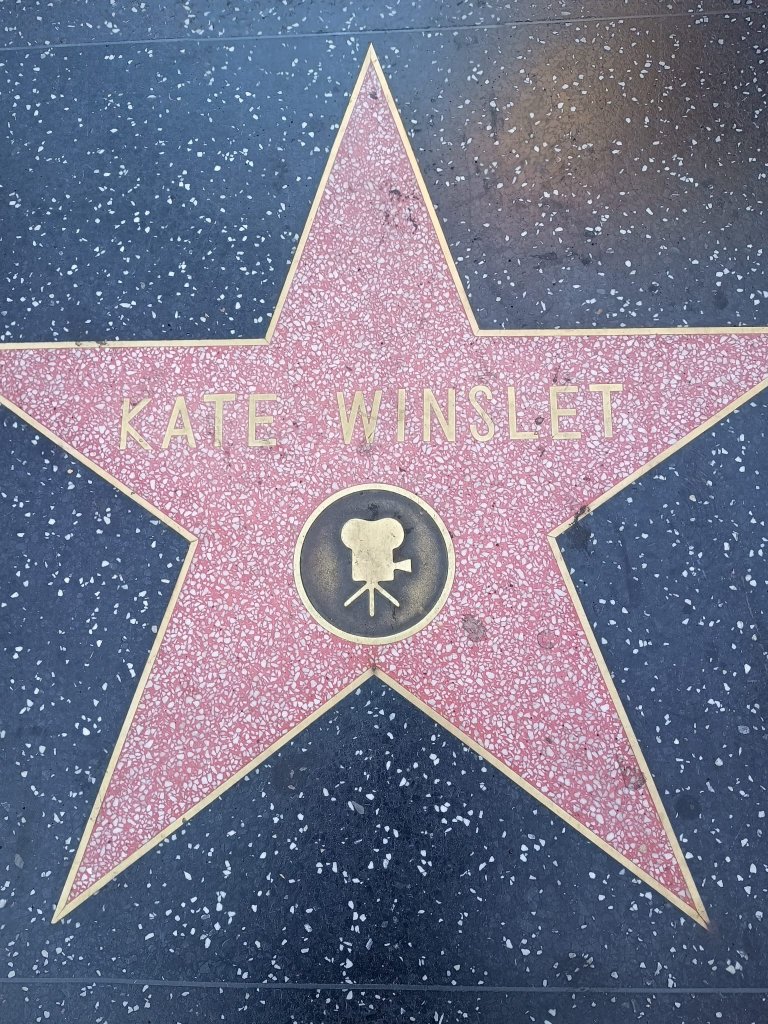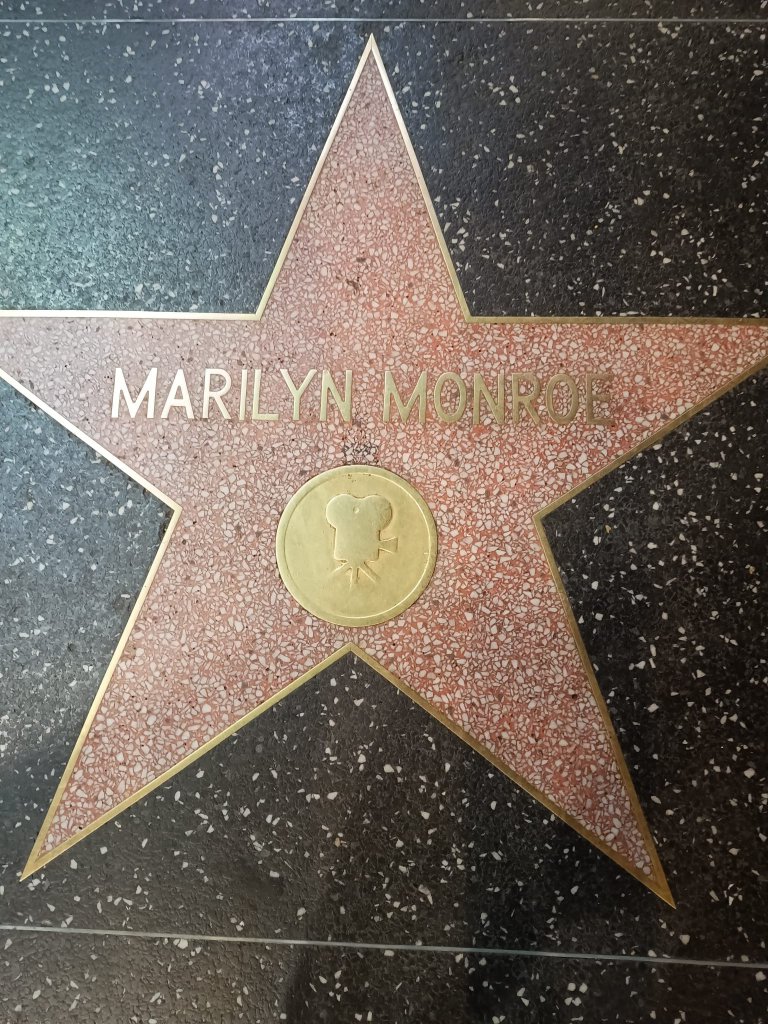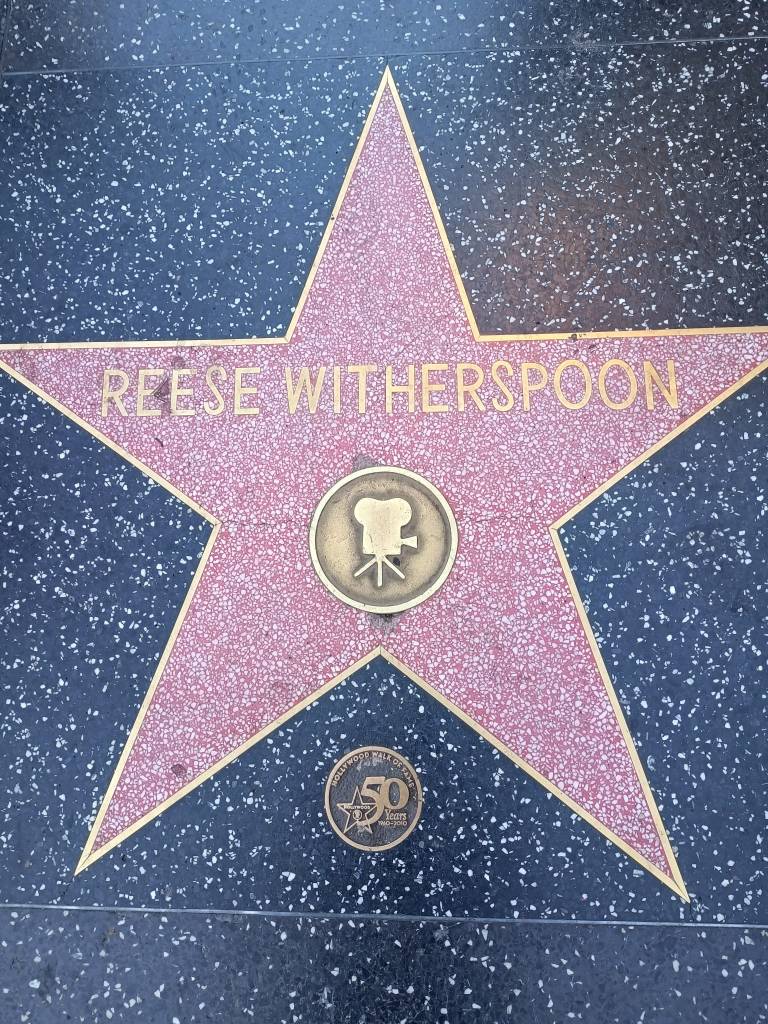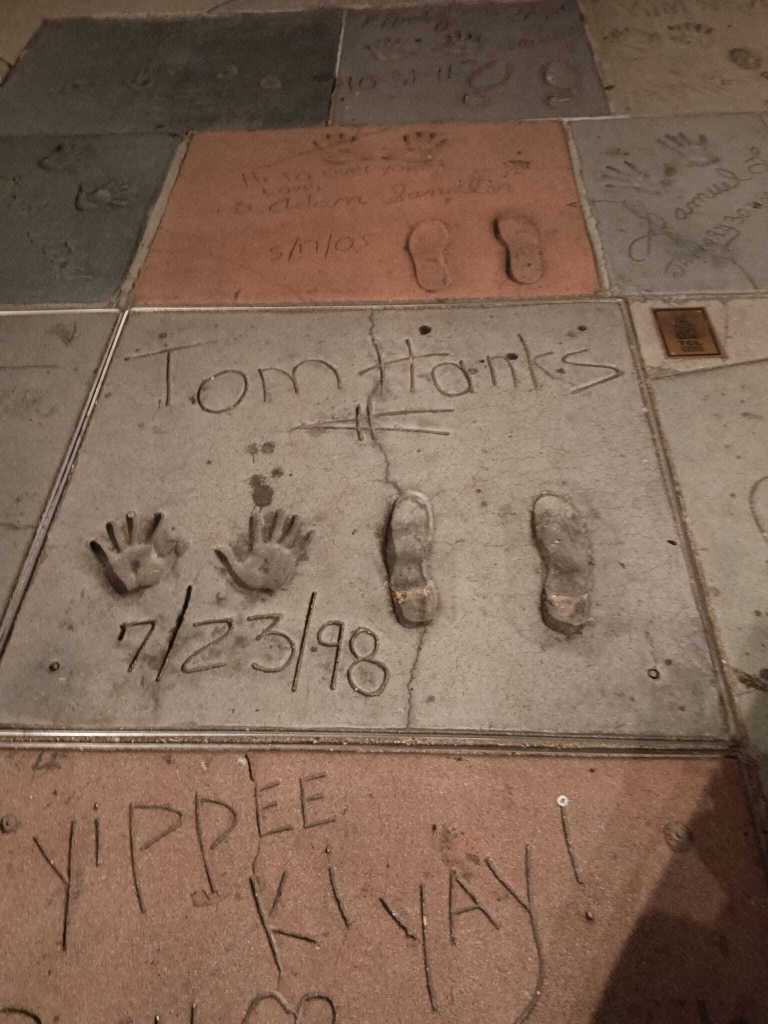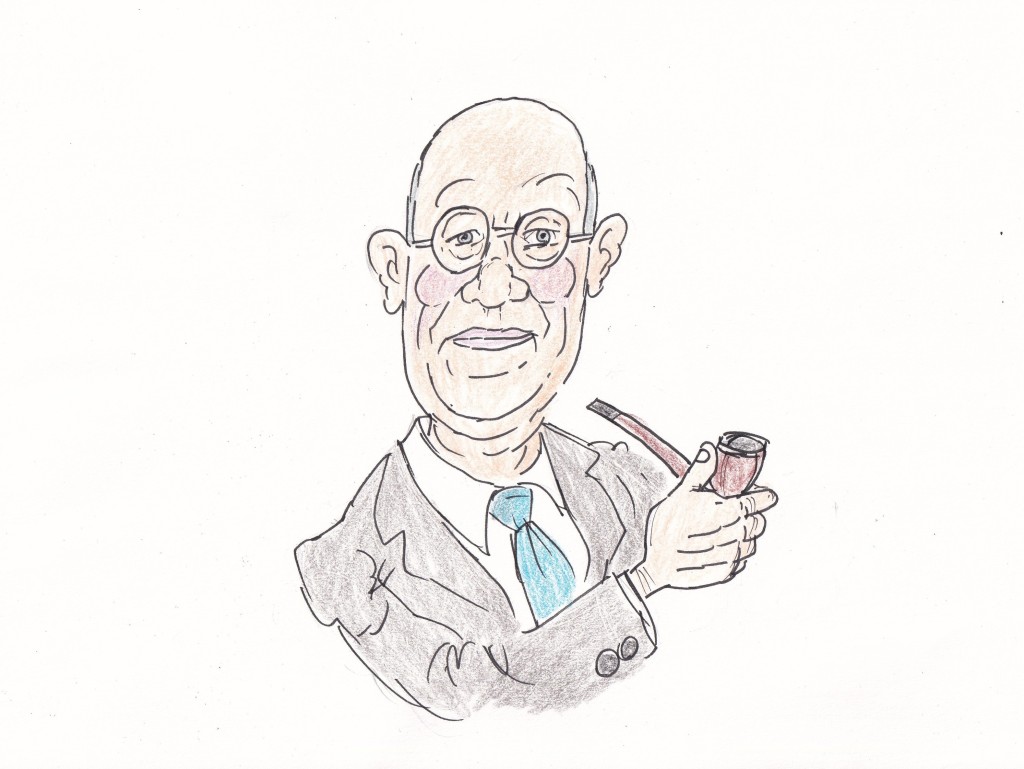Archive for the ‘The Magic of Movies!’ Category
The six seasons of Kalidasa in Bollywood: Summer
Posted in The Magic of Movies!, tagged Bollywood, Kalidasa, Music, Ritusamhara, Seasons, Songs, Summer on May 8, 2024| Leave a Comment »
Chiaroscuro: Guest Post courtesy Talk the Walk
Posted in The Magic of Movies!, tagged Art, Black and White, Bollywood, Chiaroscuro, Cinematography, Movies on April 1, 2024| Leave a Comment »
Ten of my favourite Helen songs: Guest Post by Dustedoff
Posted in The Magic of Movies!, tagged Bollywood, Dances, Helen, Movies on November 22, 2023| Leave a Comment »
Madhumati and Salil Choudhury: Guest Post by Krishna Kumar
Posted in The Magic of Movies!, tagged Lyrics, Movies, Music, P G Wodehouse, Salil Choudhury, Shailendra on September 4, 2023| Leave a Comment »
A whiff of Hollywood
Posted in The Magic of Movies!, tagged California, Grand Canyon, Hollywood, Las Vegas, Los Angeles, Movies, P G Wodehouse, USA on August 31, 2023| 4 Comments »
For someone like me who has been brought up on a healthy diet of movies since my tender years, it is not easy to visit a new place and the mind not veering off to recollect a movie which the place reminds me of. Besides, anything connected with movies in any way – be it a Walk of Fame, a theatre where the prestigious Oscar awards get presented, or even a drive past either Sunset Boulevard or Rodeo Drive and Beverly Hills – acts as a strong magnet, drawing me to it the way a moth would be captivated by a candle. Luckily, the analogy stops there, since, unlike a hapless moth, I do not perish. On the contrary, I live to tell the tale, merely in the spirit of sharing my experiences with those who are likewise besotted by the science and art of moving images.
Recently, an opportunity came up whereby I could visit the South-Western part of the United States of America. Here are some of my experiences.
The Grand Canyon
Irrespective of the viewing point one decides to visit, the stark beauty of raw nature here holds you mesmerized. Just like the many fjords in Norway, these unique rock formations would have taken millions of years to take their present shape. As one reads about the aboriginals who inhabited this area, believing in the forces of nature which protect them and guarding over the famous gold deposits which ended up sounding their death knell when those who consider themselves as ‘civilised’ ended up suppressing their rights, one wonders if there would ever be an end to human greed and avarice.
As the sun continued its journey in the clear blue sky above and the shadows of peaks falling on the opposite side of a narrow valley, my mind went back to Mackenna’s Gold (1969), with Gregory Peck and Omar Sharif chasing a pillar’s shadow to find the gold.
Meeting Some Orcas
A visit to Sea World, a large aquarium-cum-amusement park in San Diego, enabled me to have a close look at a herd of pink flamingos, some sea lions, penguins, besides other sea creatures like orcas.
The last mentioned may be baby whales, but their immense size does not fail to impress. As they glide past you with effortless ease, making some sounds which normal human beings like me would not be able to interpret, the awe and admiration which follows holds you in thrall for a long time. I was recalling the movie Free Willy (1993) which showcased the bond which develops between Willy and Jesse.
It Happens Only in Las Vegas
The ‘Sin City’ is famous for its unique tourist attractions. An ode to many European cities such as Paris and Venice, it even boasts of a small volcano which displays the fury of fire and red-hot lava when a show takes place. A shopping mall which is designed to make you feel as if you are in Venice, what with a meandering canal on which you could enjoy a gondola ride and a blue sky above with white clouds flitting by.
Many other attractions dot the landscape, including a yet-to-be-commissioned Sphere which is said to be an auditorium with a seating capacity of 16,000 persons, equipped with the latest audio systems. The external surface of this structure offers enchanting displays which often leave one mesmerized at night.
The musical fountain outside Hotel Bellagio ended up reminding me of the series of Ocean’s Eleven (2001 onwards) movies.
The Dolby Theatre
The Dolby Theatre (formerly known as the Kodak Theatre) is a live-performance auditorium in the Ovation Hollywood shopping mall and entertainment complex, on Hollywood Boulevard and Highland Avenue. This is where the annual Academy Awards ceremony takes place.
The Hollywood Walk of Fame
One may not expect to run into either Julie Andrews or Anne Hathaway here but walking over more than 2,700 five-pointed terrazzo and brass stars embedded in the sidewalks along 15 blocks of Hollywood Boulevard and three blocks of Vine Street in Hollywood, California leaves one in awe of the kind of multi-faceted talent nurtured and showcased in Hollywood offerings over the decades. It is a motley mix of actors, directors, producers, musicians, theatrical/musical groups, fictional characters, and others. Of course, it is a challenge to see many of these clearly, partly due to the sheer length of the walk, and owing to the jostling crowds which tread over these with gay abandon.
There is also a separate portion next to the Chinese Theatre where concrete slabs carrying either the signatures or the handprints of such yesteryear celebrities as Peter Sellers, Sophia Loren, Marilyn Monroe, Dean Martin, Tom Hanks, Susan Sarandon, and many others can be seen.
Hollywood and P G Wodehouse
Fans of P G Wodehouse are well aware that he had used Hollywood as a setting for some of his novels and short stories. He wrote a series of Broadway musical comedies during and after the First World War, together with Guy Bolton and Jerome Kern, which played an important part in the development of the American musical. Sometime during the 1930s, he began writing for MGM in Hollywood.
One may be disappointed to not to either find the offices of Perfecto-Zizzbaum Corporation or run into Montrose Mulliner and Rosalie Beamish in Hollywood. One may merely surmise that the couple might be quietly enjoying a peaceful time somewhere in Loas Angeles these days, listening to the prattle of the feet of their many grandchildren who are forever eager to sit around them and listen to them recounting the details of their marriage in a gorilla’s cage.
Likewise, Wilmot Mulliner, having retired as a manager of the affairs of a famous Hollywood celebrity, may be entertaining his grandchildren with some bird calls, at times fondly remembering Mabel Potter.
Wannabe starlets struggling to catch the eye of producers and studio owners would still be learning a few lessons from the case of Minna Nordstrom.
I did not come across any swamp of alcohol during my travels. In any case, running into Sister Lora Luella Stott, the woman who is supposed to be leading California out of the swamp of alcohol, was not on the agenda.
Some Lifelong Memories to Cherish
Travel is highly educational, said Jeeves. It is also a source of happiness, one may add. It is about experiencing the sights and sounds of a place. There is the sheer pleasure of soaking in its ambience.
When one passes by Hollywood, one feels having had a platonic brush with the many talented celebrities who, over the decades, have added all the glitz and glamour for which it is known.
(Visuals edited by Suman)
Anil Biswas: Guest Post by S. Krishna Kumar
Posted in The Magic of Movies!, tagged Anil Biswas, Bollywood, Hindi Movies, Music, Music Directors on August 17, 2023| 1 Comment »
Different ways in which Bollywood heroines express their love
Posted in The Magic of Movies!, tagged Bollywood, Hindi Movies, Love, Romance on June 30, 2023| 6 Comments »
When Cupid strikes, a relationship blossoms. But when it comes to expressing love, our dream merchants often deem it fit to put the hero on the forefront, who conveys his feelings in myriad ways. The colourful spectrum of the ways in which they express their emotions ranges from their being chivalrous to even being tormentors. Earlier, in a blog post, I had touched upon the nine different ways in which a hero sets about wooing the love of his life.
But occasionally, our dream merchants overcome their patriarchal mindset and let the heroine also express such tender sentiments as affection, adoration, adulation, devotion, attachment, fondness, passion, or love. Occasionally, they capture the precise moment when it dawns upon her that she is falling in love with the hero.
However, such songs are rather few and rare. But howsoever limited the availability of such songs, the range of emotions these songs capture is very wide. Some are downright submissive or devotional in nature. The bliss of domesticity gets poignantly showcased. Some are mildly flirtatious in their tone. Some others capture a dispute between the two also getting resolved in the process. Many others, picturized on the bold and the beautiful amongst the tribe of the delicately nurtured, express their admiration for the party of the other part in a frank and forthright manner. Some of these get rendered while the heroine is enjoying the bliss of solitude, or even in the presence of the party of the other part, thereby leaving the latter with no option but to eventually succumb to the charms of the party of the first part.
I do not allude here to songs of a rather seductive nature, like ‘Raat akeli hai…’ (Jewel Thief, 1967), ‘Husn ke laakhon rang…’ (Johnny Mera Naam, 1970) or ‘Kajra re…’ (Bunty aur Babli, 2005). You are not apt to find any ‘item numbers’ listed here. Songs where the heroine is pining for the hero in his absence do not appear in this compilation. Nor do I wish to cover here the songs which capture both the hero and the heroine expressing their unabashed love for each other, because these are available a dime a dozen, so to say.
Consider the following which come to my mind in this context.
Kisi ne apna banake mujh ko…
Movie: Patita (1953)
Singer: Lata Mangeshkar
Composer: Shankar Jaikishan
Lyricist: Shailendra
Aap ki nazron ne samjha…
Anpadh (1962)
Singer: Lata Mangeshkar
Composer: Madan Mohan
Lyricist: Raja Mehndi Ali Khan
Bhanwra bada naadaan…
Sahib, Bibi aur Ghulam (1962)
Singer: Asha Bhosle
Composer: Hemant Kumar
Lyricist: Shakeel Badayuni
Tere pyar mein dildaar…
Mere Mehboob (1963)
Singer: Lata Mangeshkar,
Composer: Naushad
Lyricist: Shakeel Badayuni
Jaaiye aap kahaan jayenge…
Mere Sanam (1965)
Singer: Asha Bhosle
Composer: O. P. Nayyar
Lyricist: Majrooh Sultanpuri
Tum hi meri manzil…
Khandan (1965)
Singer: Lata Mangeshkar
Composer: Ravi
Lyricist: Rajendra Krishan
O mere sona re…
Teesri Manzil (1966)
Composer: R. D. Burman
Lyricist: Majrooh Sultanpuri
Dheere dheere machal…
Anupama (1966)
Singer: Lata Mangeshkar
Composer: Hemant Kumar
Lyricist: Kaifi Azmi
Ye kaun aaya…
Sathi (1968)
Singer: Lata Mangeshkar
Composer: Naushad
Lyricist: Shakeel Badayuni
Na jiya laage na…
Anand (1971)
Singer: Lata Mangeshkar
Composer: Salil Chowdhury
Lyricist: Gulzar
Le to aaye ho humein…
Dulhan Wohi Jo Piya Man Bhaye (1977)
Singer: Hemlata
Composer and Lyricist: Ravindra Jain
Tere bina jiya jaaye na…
Ghar (1978)
Singers: Lata Mangeshkar, Kishore Kumar
Composer: R D Burman
Lyricist: Gulzar
Ankhiyon ke jharokhon se…
Ankhiyon Ke Jharokon Se (1978)
Singer: Hemlata
Composer and Lyricist: Ravindra Jain
Sona kitna sona hai…
Hero No. 1 (1997)
Singers: Udit Narayan, Poornima
Composer: Anand-Milind
Lyricist: Sameer
Dil deewana…
Maine Pyar Kiya (1989)
Singer: Lata Mangeshkar
Composer: Raam-Laxman
Lyricist: Asad Bhopali
Dheeme dheeme gaoon…
Zubeida (2001)
Singer: Kavita Krishnamurthy
Composer: A.R. Rahman
Lyricist: Javed Akhtar
Khatti meethi…
Shirin Farhad Ki To Nikal Padi (2012)
Singer: Shreya Ghoshal
Composer: Jeet Ganguli
Lyricist: Amitabh Bhattacharya
Uff…
Bang Bang (2014)
Singers: Harshdeep Kaur & Benny Dayal
Composer: Vishal-Shekhar
Lyricist: Anvita Dutt
Moh moh ke dhaage…
Dum Laga Ke Haisha (2015)
Singers: Papon, Monali Thakur
Composer: Anu Malik
Lyricist: Varun Grover
Kaun tujhe…
M S Dhoni – The Untold Story (2016)
Singer: Palak Muchhal
Composer: Amaal Mallik
Lyricist: Manoj Muntashir
Pal…
Jalebi (2018)
Singer: Shreya Ghoshal
Music: Javed – Mohsin
Lyrics: Prashant Ingole & Kunaal Vermaa
Over time, with changes in our social attitudes, the heroines have gradually evolved from being mostly devotional to being more open, frank, and even flirtatious and goofy; bindaas is the word that comes to my mind!
On several occasions, the heroine tries to mollify a hero whose feelings have been willy-nilly hurt by her. For a list of such songs, please see this lovely post from Dusted Off.
Related Posts:
Some Hindi Movies Which Celebrate Friendship
Posted in The Magic of Movies!, tagged Bollywood, Female, Freindship, Hindi, Male, Movies, Women Empowerment on June 12, 2023| 7 Comments »
Friendship is one of the main condiments which spices up our lives. It helps us to face the harsh slings and arrows of life. Whether formed during our student days, or while pursuing our career goals and even during the sunset years of our lives, we develop relationships based on matching personality traits, common interests, mutual trust and quite a few other factors. Often, the bonds which get forged turn out to be strong and resilient. Bonds which are like underground cable connections – dormant, but in place, ready to be reactivated as and when necessary.
Friendship is a theme which is regularly harvested by our dream merchants to enrich their offerings and evoke emotions amongst their audience. If scenes of goofing around with pals make us happy, misunderstandings act like villains, making us sad.
In the post here, I have attempted to mention some movies which, I believe, have friendship as one of the main planks of their theme. Love and revenge are almost always around, but often occupy a back seat in the overall scheme of things.
However, I have avoided movies where the relationship between friends ends up becoming a love triangle of sorts. So, you may find such movies as Sangam (1964), Muqaddar Ka Sikandar (1978), Saajan (1991), Mujhse Dosti Karoge (2002), Kal Ho Na Ho (2003), and many others missing from the list below. Likewise, I have given a miss to the ones wherein friendships fall in the LGBTQ category, of which there is no dearth these days. Thus, series like Anokhi Daastaans (Episode: Geeli Pucchi: 2021), Modern Love, Mumbai (Episode: Baai: 2022) and movies like Maja Ma (2022) have been given a skip.
Seema (1955)
Director: Amiya Chakrabarty
The chemistry between Nutan and Shubha Khote in the surroundings of an orphanage stood out. Some of you may remember the long cycle ride undertaken by the latter towards the climax of the movie.
Dosti (1964)
Director: Satyen Bose
Circumstances and love for music brings together a blind person and a handicapped one. Trust Rajshri Productions to keep regaling us with family-oriented themes which tug at our heart strings.
Anand (1971)
Director: Hrishikesh Mukherjee
An unusual bond develops between an idealistic doctor and a terminal cancer patient who comes to stay with him during the last few months of his life. The frustration of a doctor at not being able to alleviate the suffering of his new-found friend was etched out so very poignantly.
Victoria No. 203 (1972)
Director: Brij
Two old golden-hearted crooks get released from jail and wish to spend the rest of their lives as good, respected men. The plan is short lived when they willy-nilly find themselves on the trail of some stolen diamonds.
Director: Hrishikesh Mukherjee
An industrialist who does not care much about maintaining harmonious relations with his labour force ends up being confronted by a close friend who empathizes with the travails of the workers and evolves into a trade union leader of sorts.
Sholay (1975)
Director: Ramesh Sippy
Even though the main theme was all about revenge with romantic sub-plots thrown in, the friendship between Jai and Veeru went on to become the stuff of cinematic legends.
Hera Pheri (1976)
Director: Prakash Mehra
Two small-time crooks loot other rich ‘respected’ but criminal-minded people for a living. Misunderstandings arise between them, but eventually get cleared up and the friendship between them gets reestablished.
Chashme Baddoor (1981)
Director: Sai Paranjape
Three friends who live together run into a young lady from the neighbourhood. The studious one ends up winning her heart. Out of jealousy, the other two try to complicate the relationship between the couple. A grandmother ends up clearing the mists, reuniting the couple.
Yaarana (1981)
Director: Raakesh Kumar
If one friend goes out of his way to promote the singing career of a childhood friend, the other, upon becoming famous and rich, reciprocates the gesture by donating the proceeds of his earnings and consequent record deals in order to rid his friend of his many mortgages and to reunite his family. When one gets admitted into a lunatic asylum, the other one manages to sneak in and restore his sanity.
Andaaz Apna Apna (1994)
Director: Rajkumar Santoshi
Two daydreamers come up with a get-rich-quick scheme by pursuing a millionaire’s daughter. Once they meet each other, they form a competitive bond and land up at the daughter’s place under some false pretexts. Diamonds, mafia dons and jealous uncles play a role. Eventually, they play saviours to the daughter, her secretary, and the family, thereby achieving their goals.
Dil Chahta Hai (2001)
Director: Farhan Akhtar
Three close friends pursue a different career path after passing out of college. Love blossoms for each one, though differently. They go on a road trip together. Misunderstandings between them get cleared in the end.
Filhaal (2002)
Director: Meghna Gulzar
One of the rare movies which portrayed a strong bond of friendship between two inseparable friends. During a fencing session, a freak accident leaves one of the friends injured, rendering her unable to conceive later in life. The other one offers to be a surrogate mother for the couple. Complications arise in the relationship, though the story eventually ends up on a positive note.
Rang de Basanti (2006)
Director: Rakeysh Omprakash Mehra
When a British student decides to make a film on pre-independence freedom fighters from India, contemporary reality meets history, forcing the viewers to introspect as to where we are headed as a country. The bond between the friends stood out for its empathic and realistic portrayal.
3 Idiots (2009)
Director: Rajkumar Hirani
The friendship between three classmates withstands the test of time. Ten years down the road, their common antagonist also joins in when they decide to search for one of the missing friends. The central message of the movie was to decide one’s career moves based not on parental or popular expectations but on one’s inner passion.
Zindagi Na Milegi Dobara (2011)
Director: Zoya Akhtar
Three friends undertake a joint trip so as to experience different facets of life. Their plan is that during the road trip each of them will pick a surprise adventure sport in which they all have to participate together. They complete the event successfully, bonding better with each other and gaining a renewed sense of purpose in life.
Kai Po Che (2013)
Director: Abhishek Kapoor
Three friends spot a talented boy who is good at cricket and decide to groom him. A love affair leads to misunderstandings arising between them. The 2001 earthquake in Gujarat and the riots of 2002 also pose many challenges to their bond of friendship.
Dedh Ishquia (2014)
Director: Abhishek Chaubey
Two partners in crime run into a pair of scheming ladies who have ideas of their own. The latter end up cocking a snook at the former by selling a necklace stolen by them, buying a property from the proceeds, and settling down there to start a dance school for young girls – a scheme the two friends had hatched between themselves.
Parched (2015)
Director: Leena Yadav
Four women in a desert village of Gujarat, India, forge a strong bond of friendship between themselves while facing social evils, age-old traditions and practices of patriarchy, child marriage, dowry, marital rapes, and physical and mental abuse.
Double XL (2022)
Director: Satramm Ramani
A common challenge of being overweight results into a bond of friendship developing between two young ladies. They decide to work together and demonstrate the perks of obesity to the world, ridiculing the current craze for Size Zero and unrealistic norms of beauty peddled by fashionistas and the media.
Hush Hush (2022, Series)
Director: Tanuja Chandra
A taut thriller where one of the four close friends dies in mysteriously circumstances. The other three ladies eventually uncover the real reason for the death of their friend, while battling the challenges in their own lives.
Uunchai (2022)
Director: Sooraj Barjatya
When a close friend suddenly dies, three friends decide to honour his last wish – that of visiting the Himalayas. Despite health challenges, they undertake a hiking trip to the Everest base camp. They manage to scatter the ashes of their departed friend there. The perilous journey makes them realize that each one of them has heights within which are waiting to be scaled, bringing home the key message of striving to realize our fullest potential in life.
Why Are Women Short-changed?
There may be many more friendship-based movies which I would have missed out here. However, one thing that strikes is that of a serious shortage of movies on friendships between women. Is it that those hailing from the tribe of the delicately nurtured do not have friends?
The underlying cause could perhaps be that a major chunk of our society thrives on a patriarchal mindset; while males enjoy their friendships for a very long time, females often get a raw deal on this front because family commitments reign supreme, often to the exclusion of all else. With hardly any personal space and a minimal availability of ‘Me Time’, the bonds of female friendship, if any, do not enjoy the kind of continuity that male friendship does.
We need to encourage and empower the women in our lives to keep their own embers of friendship aglow, alive and kicking!
Related Posts:
The Madras Cut and the Bombay Thrust in Indian Cinema: A Guest Post by Harish Nambiar
Posted in The Magic of Movies!, tagged Bombay Thrust, Indian Cinema, Madras Cut on May 10, 2023| Leave a Comment »
Founder of subaltern studies Ranajit Guha’s death late April this year and maestro Satyajit Ray’s death anniversary had a series of excellent posts on the two men. I dug out a 2013 piece that connects the two tenuously with a bit of trivia, but hopefully it would be a nice primer on India’s various filmdoms.
About The Cut and The Thrust
When the filming of Satyajit Ray’s path- breaking Pather Panchali began in 1952 it was the climaxing of a process immediately preceded by the 99 films the would-be auteur saw in London where his employer of the time had sent him on assignment as an advertising professional. Among the films that had the most profound effect on the master director was Vittorio De Sica’s Bicycle Thieves, and its influence is there for all to see in Pather Panchali.
However, Ray’s genius made his film original by adding to it a visual lyricism and poetry that was thoroughbred Bengali, in no small measure helped by the soft weeping, sighing, moaning, and soaring of Ravi Shankar’s sitar. The stories of the many agonies Ray suffered to create the masterpiece are now legion.
However, there is an alternative story parallel to Ray’s early struggles that is less known. A group of college-going teenagers in Kerala, also influenced by De Sica, went through more or less the same struggles to raise money and film a neo-realistic film, two years after Ray began filming. The Newspaper Boy, the Malayalam film, beat Pather Panchali to public release in May 1955.
Apu, or Appu in the Malayalam version, was the name of the protagonist in both the films and they were both a humane take on poverty in recently independent India, depicted as graphically as De Sica’s masterpiece did the poverty of the citizen in post WW II Italy in 1948. But by 2013, The Newspaper Boy has been relegated to trivia rounds of quizzes, despite the fairly high quotient of critical acclaim it garnered for its boldness and the heroic, awe-inspiring ambition, and tenacity of its young makers.
In May 2005 a social service club in Kochi, Kerala, toasted the surviving members of that pioneering team for their daring jab at film history. Nearly 60 years since, newly found prosperity, easier exposure to the world and the quickening of instinct that technology aids, has changed the nature of filmmaking and the pattern of how films are consumed by the Indian filmgoer. And yet, a lot of good work in various Indian native languages bypasses the cineaste despite great, concomitant advances in distribution of films.
So impermeable are the walls of the compartments that would be called Indian cinema that many nostalgic cineastes feel guilty for criticising the national television channel that showed regional language movies with subtitles through the ’80s when these movies won national prizes. It is another aspect of the nation-building process set in motion by earlier Indian statesmen that is ignored. However, in the more commercial and new media-led world a regulation college song in Tamil and English, “Kolaveri Di”, goes viral and becomes an instant hit.
Madras Meme
Mindless mass entertainers, oddly enough, cross over to wider audiences through remakes. Govind Nihalani, the acclaimed director of parallel cinema of the ’80s and ’90s, asked film scholar K Hariharan to explain this phenomenon that he said was called the “Madras Cut”. Nihalani was chairing a panel discussing changing narrative trends in Hindi cinema, at the Film Writers Association’s third Indian Screenwriters Conference in Mumbai this week.
Hariharan, a film director and the dean of LV Prasad Film & TV Academy, answered it simply. He said Madras studios always made national films and the moment a film crossed 50 weeks in the theatres, Hindi producers had no qualms or questions to ask before they remade it in Hindi. Ram aur Shyam (1967) and Haathi Mere Saathi (1971) were such remakes that raked in the money for Hindi producers.
Incidentally, Haathi Mere Saathi was the first film from the celebrated writing duo of Salim Khan and Javed Akhtar, who would memorably use the Bundelkhandi word, “daari”, when they have the dacoit Gabbar Singh, in Sholay, leering at Hema Malini and saying, “Daari ke paaon toh dekho” in one of the prized rare bits of elemental detail Hindi films were not famous for, till then.
Gabbar’s speech pattern was a great distinction in creating the unforgettable character that the supremely talented Amjad Khan would forever be identified with. The fact was that Chennai, when it was Madras through the ’60s, ’70s and ’80s, was the home of the south Indian film industry for a long time. The Malayalam film industry, though it started originally in Trivandrum in the 1920s, eventually shifted to Madras before moving home in the late ’80s. The Telugu film industry’s biggest studios were incubated in Madras before moving to Hyderabad in the late ’90s.
The Kannada film industry looked north to Maharashtra, and flirted with Kolhapur, more than Bombay, in its nascent years. The Madras film industry of the time produced a lot of morality tales and Aesop’s fables-like simple-minded grand narratives for mass audiences. It deftly navigated the move from Hindu mythological tales to more contemporary stories.
Cultural Cauldron
About the same time, the Hindi film industry was a thriving marketplace blessed by unequalled talent from Bengal, in the form of directors and music composers, and from Punjab and Uttar Pradesh in the form of actors, producers and directors. They also benefited from the strong wave, perhaps once in the lifetime of a country, of out-of-work poets who wrote in Urdu from the entire northern region of the subcontinent.
After the partition of India, Urdu, that sublime language, was converted to ‘Islam’ in India’s popular consciousness. Gulzar reclaimed Urdu from its Islamic identity by transforming it into an irreligious, aesthetic adjective in 1998 with the line “Jiski zubaan Urdu ki tarah” in the Tamilian director Mani Ratnam’s Dil Se. But prior to that, Urdu’s best poets found a home in Bombay to write as they pleased and affect a vast majority of the country’s population. And they were the stars of the golden period of Hindi films.
Cross-fertilisation has always been a trend in filmdom. It is after all one of the four genuinely equal-opportunity spaces in India besides crime, spectator sports and politics. Ashis Nandy had identified these social segments in his panel discussion at the Jaipur Literary Festival that was overtaken by the controversy about his purportedly anti-dalit statement. Hindi films veered, I imagine because of brute strength, in terms of having a far larger market and spread than any other language films can ever have, to become the new English for Indians.
Its pan-Indian appeal has seen it muscling up on weaker language film industries of India, while the stronger, self-sustainable economies remain undaunted, much like the film industries of the south. And the rise of the Bhojpuri film industry in recent times is a wonderful reminder that Hindi too is not as monolithic as Bollywood films would have us believe.
Rules of Engagement
It is an unforgivable irony of India’s film history that MS Sathyu, a Kannadiga from Mysore, is the one who made the most defining film on partition. This, despite the fact that several well-known Bombay film families traced their individual stories directly to the partition of India. Partition also deprived Hindi film industry of the services of Sadat Hasan Manto, a film writer and the most original and daring literary cartographer of the partition. I heard very many speakers at the screenwriters’ conference moaning about the fact that Hindi films do not engage more urgently with the country’s contemporary reality.
One of the reasons was because it still was wondering if filmmakers should have any social responsibility. Frankly speaking, as sociologist Shiv Visvanathan reminded the screenwriters in his keynote address, social responsibility is not the screenwriter’s duty. Just recognising the current realities of his society and being informed about it, would do. One good way would be to recognise that a big swathe of those who watch Hindi films do not speak Hindi at home. At home they speak their mother tongues, which are as many and more than the states and regions of India. Similarly, a lot of good Tamil, Malayalam, Bengali, Kannada films are set in their local milieu.
Hindi films do not have to adapt them to resettle the story in Uttar Pradesh or Bihar. They can tell a Naga story set in Nagaland itself. It would be an excellent way to do justice to the diversity of the country for a national audience of Hindi films that is not from the Hindi heartland. Very often, local language films are also more integral to the milieu in terms of their deeper and organic connects with all aspects of the culture. MT Vasudevan, a Malayalam writer who is also a Jnanpith award winner, has won the highest number of National screenplay writing awards. A story he writes need not be excised from Kerala, his setting for most of his stories, just so that it can be made to “travel” to Hindi film viewers.
Spreading the Net
One great social responsibility the screenplay writers, directors and producers of Bollywood can undertake is scout for original stories in their natural locales. It would be an ambition that would be rewarding because it would tap into the cultural diversity of the Hindi filmgoers.
Besides, it will more directly address the question of social responsibility instead of ideological or moral pedantry that the term seems to mean to many. LV Prasad, the doyen of Telugu and eventually Hindi films, wrote his scripts in English as Hariharan told the capacity audience at the screenwriters’ conference.
The Los Angeles Times’ film blog headlined a story about the money raked in by a Telugu hit in a ticklishly amusing way in September 2011. “Dookudu, the biggest hit you’ve never heard of”. That would read horribly offensive in a Hindi paper. Looking farther afield, way beyond villages in the Hindi heartland and the metros of the country, will yield an embarrassment of riches in terms of stories and locations that would do greater justice to the multilingual army of fans of Hindi films.
For those who’d rather read it online: https://tinyurl.com/333yauup
The Author
Harish Nambiar is an editor with The Economic Times. Before that he was with Reuters and clutch of national mastheads. He has been a journalist since 1990.
In the mid-nineties he taught a semester as a lecturer to undergraduate students teaching the rise of the novel as a form and poetry appreciation in a Mumbai college.
Sage Publications published his book of narrative non-fiction Defragmenting India: Riding a Bullet Through the Gathering Storm in 2012 that he plans to reissue on Amazon soon.
Related Posts:
Of Filmitis and Serialitis
Posted in The Magic of Movies!, tagged Addiction., Facebook, Humour, Movies, OTT, Serials, The Reviewer Collective on May 2, 2023| 8 Comments »
The foundations of our civilization are quivering. Homo sapiens are faced with a mental health crisis of gigantic proportions. There is widespread concern about the pace at which the twin epidemics of Filmitis and Serialitis are spreading across countries and continents. Medical researchers of all hues are twiddling their thumbs, trying to figure out a cure for these afflictions which happen to be not only highly addictive but also pleasurable.
These afflictions affect all human beings, irrespective of their age, sex, cast, creed, or ethnicity. Post-2020, when a pandemic struck humanity, the spread of these virulent challenges has posed a serious challenge to humanity. These are said to be highly contagious. A word of mouth is all that is required to lead one to contract it. Even an inane post on a social media platform in a Facebook group like The Reviewer Collective could nudge one to start watching a movie or an OTT series and then get hooked to it. Often, a long period of bondage ensues. Frequent viewers of the delightfully diverse content on the OTT platforms gladden the hearts of many a producer-director duo. The shareholders of such platforms can be seen laughing all the way to their banks.
To put it simply, once the germs of Filimitis and Serialitis have managed to find a foothold in any neuro-system, one’s fate is sealed.
Most people suffer from Serialitis these days. The OTT platform throws an infectious suggestion. We decide to check it out. We get sucked in. The directors and the scriptwriters ensure we never get to leave the confines of their alt universe. We get stuck with it. At night, we shudder to think of what may happen next. ‘Filmitis’ is far more tolerable. Whatever happens, it gets wound up in around 120 minutes.
Often, we worry about kids spending too much time on their screens. When a kid starts believing that he/she has super-powers like those possessed by either Batman or Spiderman, our brows get furrowed. However, when it comes to addictions like Filmitis and Serialitis, we, the so-called adults, are no less.
The Symptoms
These ailments manifest themselves in many ways. A mood of apathy towards one’s near and dear ones sets in. Public interactions are often given a skip, unless mandated otherwise by an overbearing spouse. One develops a strong tendency to compare on-screen characters to those one comes across in real life. At work, haughty bosses get likened to such villains as Gabbar Singh (Sholay) and Mogambo (Mr. India).
A perpetual state of intoxication envelops one. Meticulous notes get made of the varied recommendations which keep pouring in from all sides. Lists showing the yet-to-be-watched offerings by our dream merchants get updated regularly. A pitiless analysis of the scintillating characters on the screen gets done. Wikipedia gets searched for more offerings featuring a favourite actor on the screen. Speculations get made as to what would have happened if they had responded to a situation differently.
Even lay viewers suddenly evolve into seasoned reviewers, offering insights into such aspects as acting proficiency, script writing, cinematography, music, lyrics, editing, and the like. I, for one, upon coming across an offering which sound exciting to me, would be in the transient grip of a ‘Eureka’ moment, rushing to share the information with aficionados who may devour it with much glee. Archimedes would surely be squirming in his grave.
The most serious symptom happens to be the disinclination of all those suffering from Filmitis and Serialitis to seek a cure for these maladies. Once contracted, one is apt to remain happy and contented to continue in a state of perennial addiction. Medical fraternity is yet to find a solution to this unique kind of viral resistance.
Three Stages
There are three stages of these diseases which have been identified and catalogued so far.
Stage 1
In the first stage, one displays occasional signs of having any of the symptoms described above.
Stage 2
In the second stage, one shows grave signs of many of these symptoms, but is still considered treatable by a heavy dose of socializing. Quite a few in this category practice detachment and can leave a series mid-way, without any feelings of remorse or any desire to get back to it, ever. Lord Krishna, were He to come to know of such souls, would be pleased for them to have acquired this spiritual trait.
Stage 3
The third stage is the most critical one, with no cure in sight as of now. Medicos continue to be baffled. In this stage, one is obsessed with all facets of the production of the collages of moving images, much to the exclusion of every other kind of arts. In every situation of life, a streak of one of the narratives is invariably noticed.
All relatives, friends, seniors, colleagues, and juniors get identified with one or the other characters created on the screen. Lawyers sound like either Mickey Haller (The Lincoln Lawyer) or Woo Young-woo (Extraordinary Lawyer Woo). When visiting a hospital, female doctors get likened to Meredith Grey (Grey’s Anatomy). Nurses who go out of their way to assist us sound like Amy Loughren (The Good Nurse). When visiting a shopping mall, mumbling managers get likened to Glenn and smart salesgirls to Amy (Superstore) fame.
A person suffering from the last stage of these disorders often complain of a stifling sensation. Nothing else in life appeals any longer. The allure of catching up on the latest on-screen fate of the characters often makes one lose sleep. Binge-watching becomes the norm. During days, when life really happens, one goes about the mundane affairs of life like a zombie with frayed nerves, bleary-eyed, and lost in one’s own thoughts.
Weaponizing these maladies
Do we need de-addiction centres to counter these viruses of Filmitis and Serialitis? Do we wish our medical research honchos to come up with a vaccine to keep the foundations of our civilization from quivering incessantly? Not necessarily. Instead, an innovative deployment of these viruses would help humanity in more ways than one.
The day is not far off when governments the world over may end up weaponizing these diseases.
Tackling obdurate enemies
Leaders as well as soldiers of armies wanting to attack a country could be easily lulled into a sense of complacency and inaction if facilitated by the border area networks offering free streaming of OTT content dished out by the country under attack. Wars would then be a thing of the past. Money being spent on arms of all kinds would eventually get deployed to eradicate poverty and illiteracy across all our continents.
Improving internal security
A similar treatment, if meted out to criminals, terrorist groups and internet warriors who keep spreading fake news, would ensure peace and harmony in the society. Crime rates would nosedive.
Providing joyful healthcare
Seriously ill patients awaiting a surgery while lying on a hospital bed, if fed with such stuff as Wagle Ki Duniya and Happy Family…Conditions Apply, would happily wait for their turn to come up, thereby improving the billings of private hospitals and nursing homes.
Building a chivalrous society
If such movies as Ghar, Chhoti Si Baat, and Veer Zara get promoted aggressively by our Movie Mughals, members of the so-called sterner sex would end up being more chivalrous, thereby minimizing misdemeanours directed at the delicately nurtured. Divorce rates would plummet. Loving husbands would be more likely to follow the example of Dr Anand (Silsila), ensuring that the doves of peace keep their wings flapping over their humble abodes. Parents who are brought up on a healthy diet of such movies as Gunjan Saxena and Babli Bouncer may give up their patriarchal mindsets and encourage their daughters to scale newer heights in their lives and careers.
Improving political discourse
Politicos in power might keep the opposition leaders similarly engaged, thereby reducing their propensity to keep making defamatory speeches or hurling choicest abuses upon them. Those cooling their heels in jail, if shown an offering like Dasvi, may even get motivated to improve upon their academic record. A general improvement in the quality of political discourse may thereby ensue. Better degree of sanity may prevail around election time.
Population control
Health ministers who are having sleepless nights worrying about their country’s galloping birth rates may consider targeting their denizens in the reproductive age group with such offerings as Basic Instinct, The Dirty Picture and Lady Chatterley’s Lover, thus keeping them distracted from their amorous impulses.
Cocking a snook at the First World countries
When meeting the leaders of countries which keep showing their disdain towards an emerging economy, the premier of such a country merely needs to present his/her hosts with video recordings of such serials as Scandal, The Designated Survivor and The Diplomat.
By an innovative and clever deployment of these afflictions, the score of Gross National Happiness of all countries may improve drastically.
In other words, disorders like Filmitis and Serialitis need neither be contained nor cured. On the contrary, these need to be spread as quickly as may be possible. This would ensure that we continue devouring inane as well as cerebral stuff on our screens while slouching in our sofas, flowers are forever in bloom, God continues to be in heaven, and all remains well with the world.
Related Posts:





